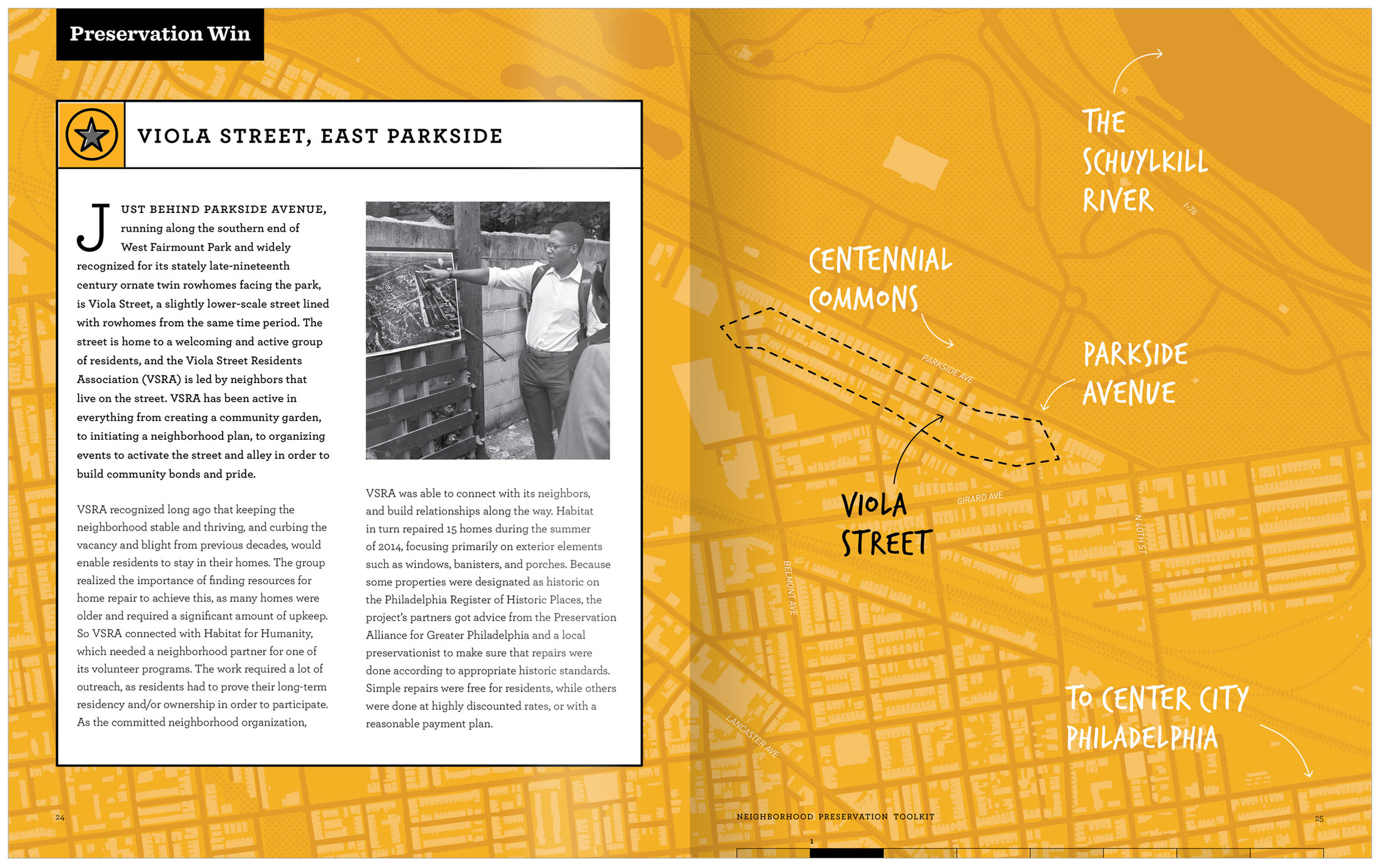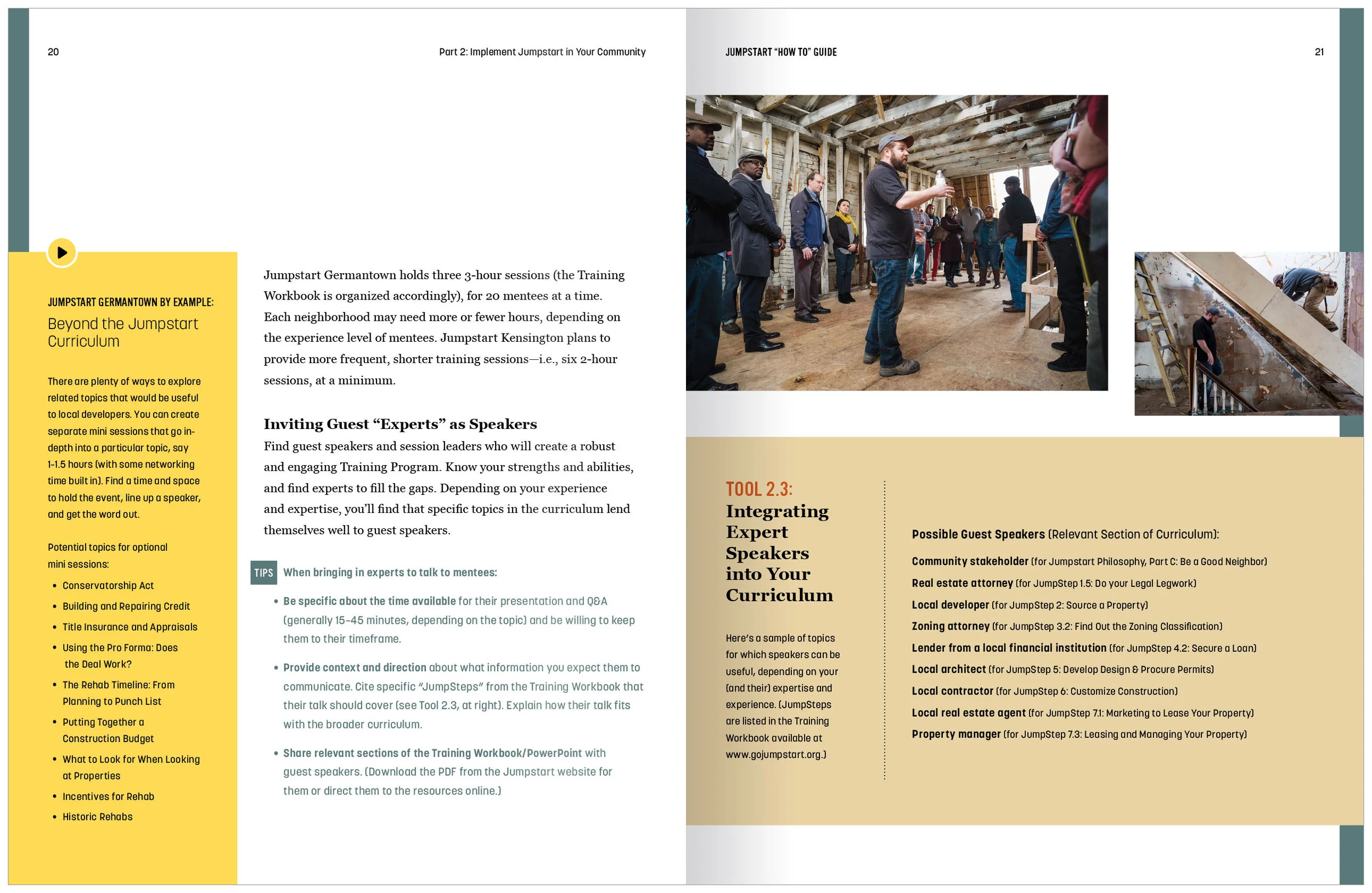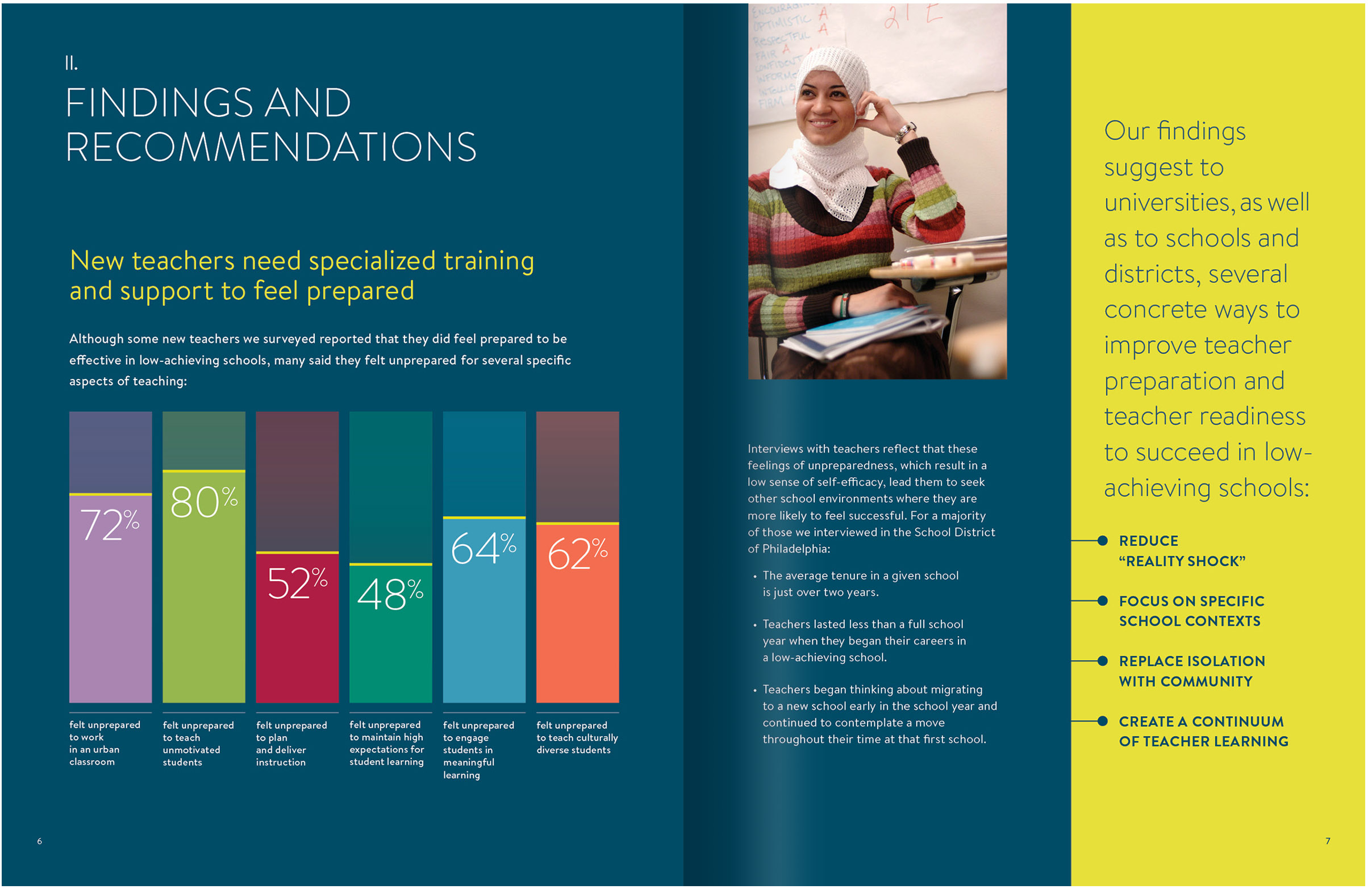Resilient Communities
Documents on cultivating and protecting sustainable neighborhoods and organizations
Neighborhood Preservation Toolkit
conceptual organization, Illustrations, LAYOUT, & PRINT OVERSIGHT
CLIENT: PennPraxis
2018
Led by PennPraxis and informed by a cohort of 21 neighborhood representatives, the Neighborhood Preservation Toolkit provides a citizen-focused perspective to historic preservation in Philadelphia. The Toolkit is organized into five chapters, inspired by the common desires of those interested in historic preservation in their neighborhoods, such as “I want to care for an older home in my neighborhood;” and “I want to create change and influence policy in my neighborhood.” Within each of these sections, four themes emerge: “Ask & Answer;” “Take Action;” “Learn More;” and “Try It Out,” where readers are encouraged to make lists; interview neighbors, and draw maps of their neighborhood. Each chapter also includes a “Preservation Win” that features a relevant, local preservation success story. A coordinating poster is also available, which folds down to fit within the Toolkit, and is available in three languages.
The creative impulse behind the Toolkit came from community course catalogs, which tend to be printed on newsprint and in one color. This kind of manufacturing yields higher quantities at lower costs, allowing a distribution far and wide—precisely the aspiration for this Toolkit. With this kind of production model in mind, the question became, “What can we do with one color plus black?” This creative restriction yielded the distinctive look of the Toolkit.
Taking Care of Business
PHOTOGRAPHY DIRECTION, INFOGRAPHICS, LAYOUT, & PRINT OVERSIGHT
CLIENT: SUSTAINABLE BUSINESS NETWORK
2011
This year-long study on small businesses in Philadelphia uncovered the reasons for their low rate of growth here and offered recommendations on how the City could better support them. Inspired by themes of strength, optimism and clarity, the design uses bright colors call out areas of important content, with a light—yet strict—layout grid. A particular challenge was creating a spread that visualized the circuitous process of approvals to obtain a projecting storefront sign. Written by Karen Black of May 8 Consulting; photographs by Dan Colavito; and printed locally using green printing guidelines.
Jumpstart How To Guide
PHOTOGRAPHY DIRECTION, INFOGRAPHICS, LAYOUT, & PRINT OVERSIGHT
CLIENT: Philadelphia LOCAL INITIATIVES SUPPORT CORPORATION (LISC)
2017
Jumpstart is a new model of community development, shaped by the successful initiative in Philadelphia’s Germantown section, that provides training, mentoring, networking, and financing options for aspiring local developers. This 40-page guide offers tools neighborhood leaders need to create a Jumpstart program of their own: getting a training program off the ground, setting up network of local developers, or laying the groundwork for a loan program. Charts summarize how to use staff time effectively, and the integration of custom photography by Steve Legato brings to life the people behind the initiative. Part of a suite of educational and promotional materials developed in partnership with Alison Rooney Communications, including a website, brochure, slide deck, and student workbook.
Preparing Teachers for Urban Schools
LAYOUT & PRINT OVERSIGHT
CLIENT: temple university
2018
The quality of teachers in Philadelphia schools is one of the most challenging and significant elements influencing student achievement. New teachers in urban settings like Philadelphia encounter challenges that they may not be prepared for by their own educational programs. This summary report asks the central question, “How can we better prepare and support new teachers to be successful in Philadelphia schools?” The researchers found that it is not teacher preparation alone that determines their performance; rather, it is the combination of their preparation and the school setting that has the most impact on student achievement. The central section of the summary report focuses on the researchers’ findings, and is organized by four key takeaways that offer data-driven, practical recommendations to improve teacher preparation and readiness. Written by Will J. Jordan, Peshe Kuriloff, Danielle Sutherland, Annette Ponnock, and Brooke Hoffman of Temple University, and edited by Alison Rooney Communications.

























